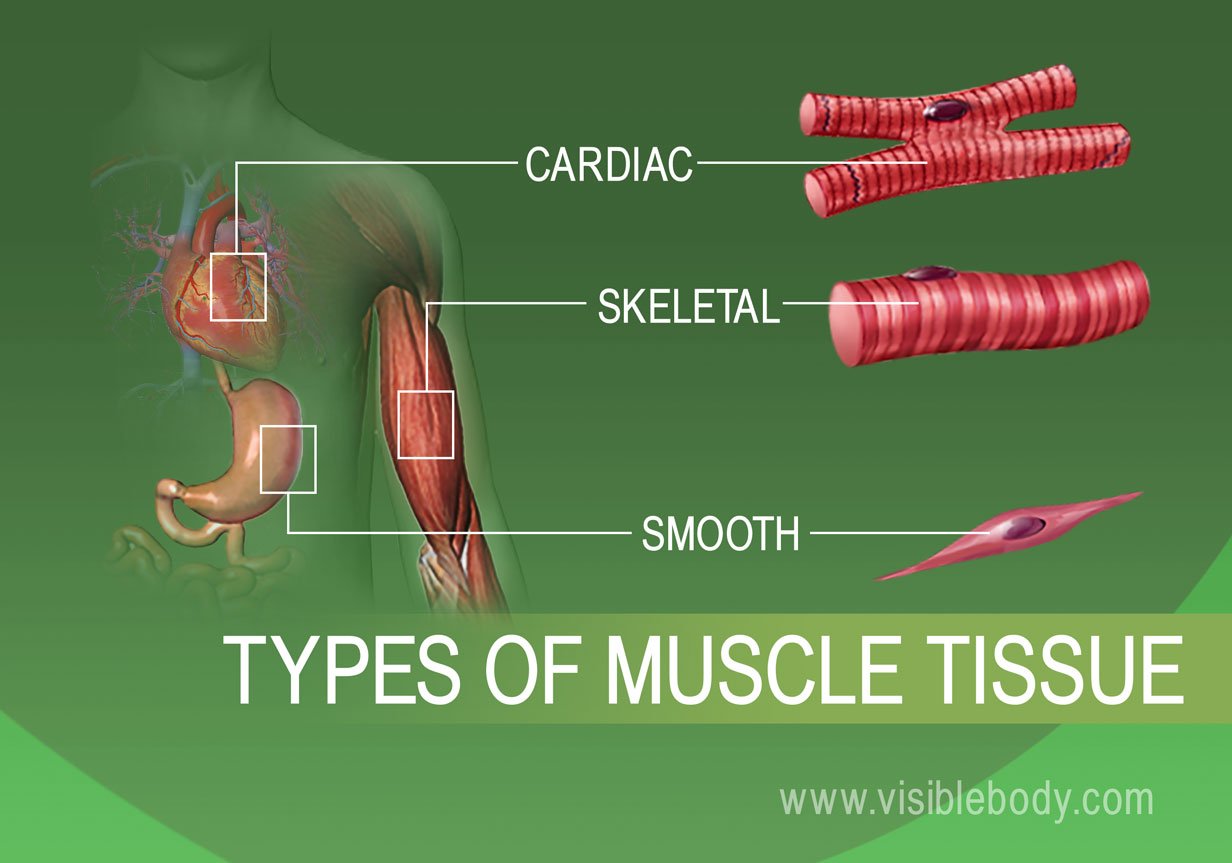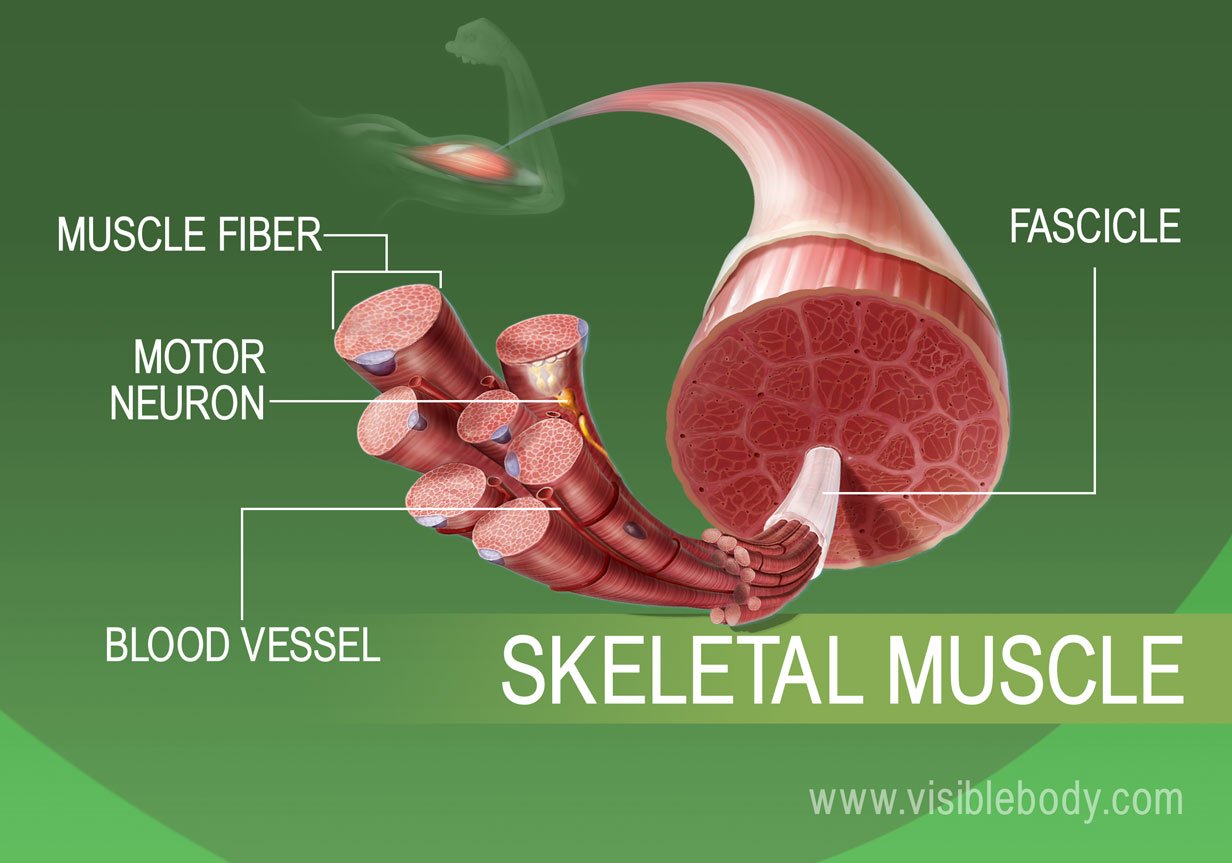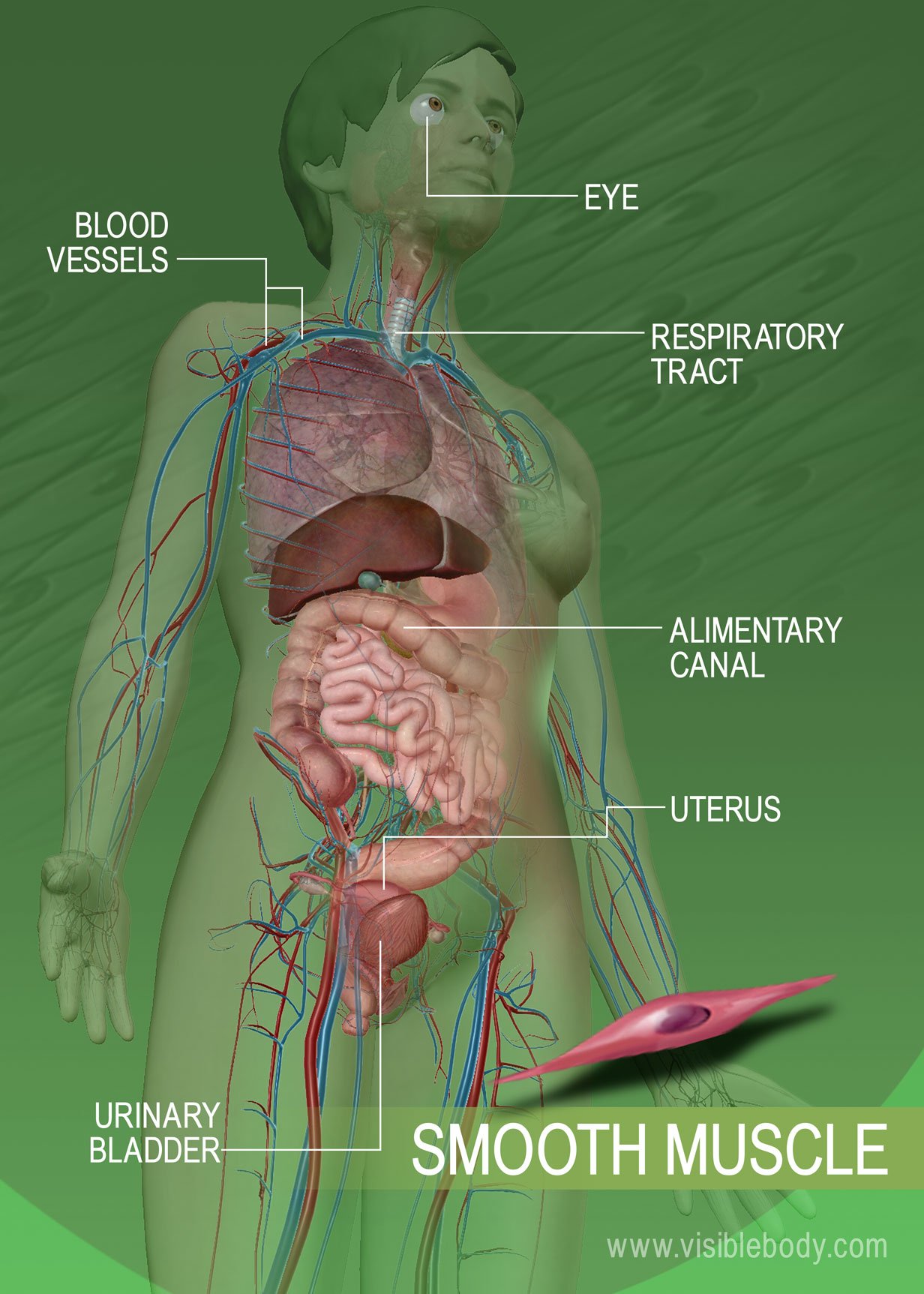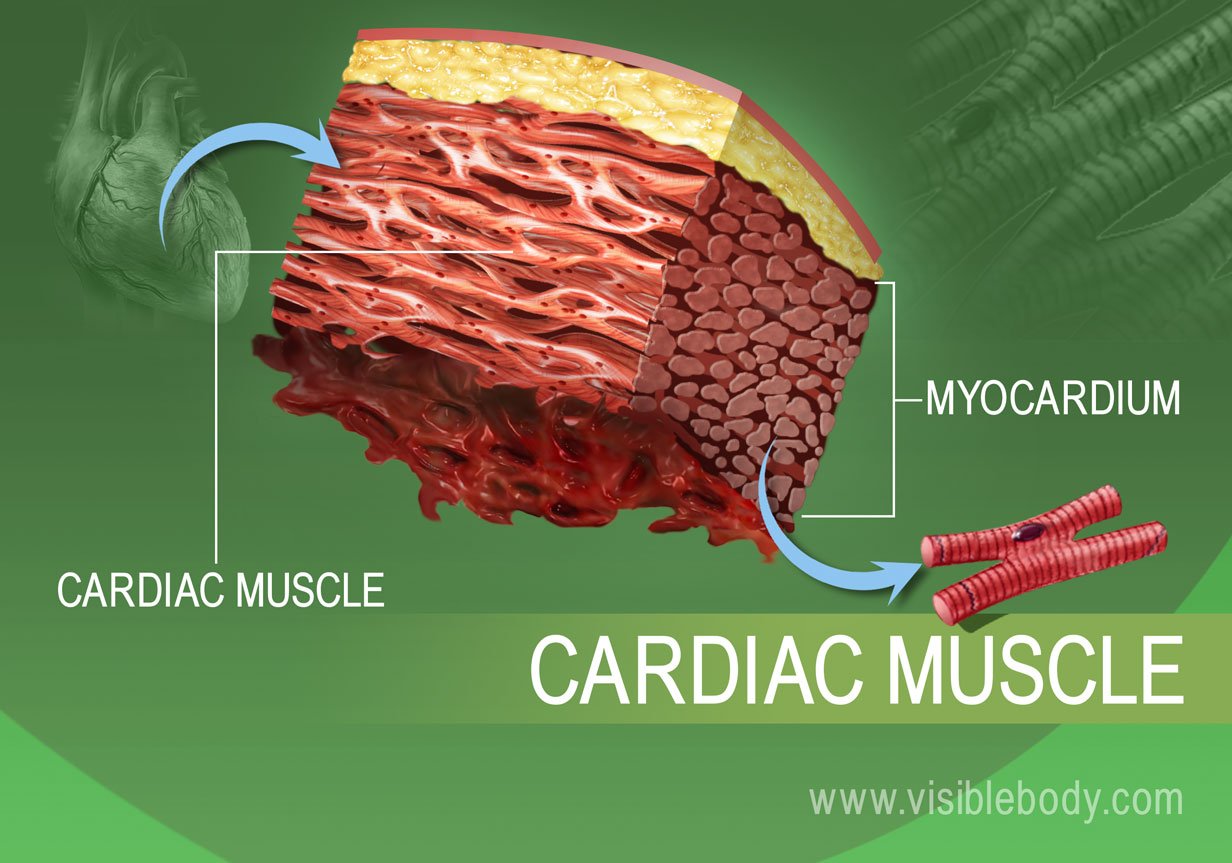
About half of your body’s weight is muscle. In the muscular system, muscle tissue is categorized into three distinct types: skeletal, cardiac, and smooth. Each type of muscle tissue in the human body has a unique structure and a specific role. Skeletal muscle moves bones and other structures. Cardiac muscle contracts the heart to pump blood. The smooth muscle tissue that forms organs like the stomach and bladder changes shape to facilitate bodily functions. Here are more details about the structure and function of each type of muscle tissue in the human muscular system.

Skeletal muscles attach to and move bones by contracting and relaxing in response to voluntary messages from the nervous system. Skeletal muscle tissue is composed of long cells called muscle fibers that have a striated appearance. Muscle fibers are organized into bundles supplied by blood vessels and innervated by motor neurons.

Smooth muscle is found in the walls of hollow organs throughout the body. Smooth muscle contractions are involuntary movements triggered by impulses that travel through the autonomic nervous system to the smooth muscle tissue. The arrangement of cells within smooth muscle tissue allows for contraction and relaxation with great elasticity. The smooth muscle in the walls of organs like the urinary bladder and the uterus allow those organs to expand and relax as needed. The smooth muscle of the alimentary canal (the digestive tract) facilitates the peristaltic waves that move swallowed food and nutrients. In the eye smooth muscle changes the shape of the lens to bring objects into focus. Artery walls include smooth muscle that relaxes and contracts to move blood through the body

The heart wall is composed of three layers. The middle layer, the myocardium, is responsible for the heart’s pumping action. Cardiac muscle, found only in the myocardium, contracts in response to signals from the cardiac conduction system to make the heart beat. Cardiac muscle is made from cells called cardiocytes. Like skeletal muscle cells cardiocytes have a striated appearance, but their overall structure is shorter and thicker. Cardiocytes are branched, allowing them to connect with several other cardiocytes, forming a network that facilitates coordinated contraction.
TED-ed video: “What makes muscles grow?”
Color Images of Histological Sections of Muscle Tissue. Newark: University of Delaware, Biological Sciences. http://www.udel.edu/biology/Wags/histopage/colorpage/cmu/cmu.htm
Visible Body Web Suite provides in-depth coverage of each body system in a guided, visually stunning presentation.
When you select "Subscribe" you will start receiving our email newsletter. Use the links at the bottom of any email to manage the type of emails you receive or to unsubscribe. See our privacy policy for additional details.